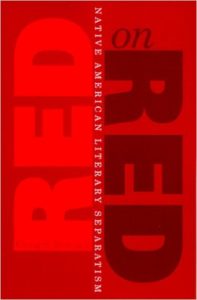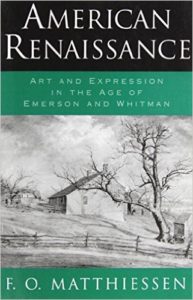Huhndorf, Shari. “Literature and the Politics of Native American Studies.” PMLA 120.5 (2005): 1618-1627. JSTOR. Web. 4 October 2016.
Huhndorf’s essay chronicles the various epistemologies spanning the relatively short span of NATIVE AMERICAN STUDIES. While some Native Americanists recognize that Native scholars have little impact at universities, they also realize that placing Native studies within American literature studies is not desired, for they feel that Native studies are an entity unto itself (Huhndorf 1618). Nevertheless, it’s not only a concern at universities, for as Huhndorf explains, “If the marginalization of American Indian studies in academia, as these scholars suggested, reflects the place of Native peoples in United States society, so too does Native politics shape intellectual work in the field” (1618). This element makes the field of Native studies so potentially dynamic, for it is not only about the critical approach to literature; moreover, it is about the perceptions of Native people historically and currently. As Amy J. Elias writes in her chapter “Critical Theory and Cultural Studies,” theorists of cultural theory involving race, ethnicity, and nationhood “are concerned with the de facto and de jure rights accorded to people of different racial or ethnic backgrounds and with how people of different races, ethnicities, and/or nations are represented in written, spoken, and visual texts” (McComiskey 252). Clearly, this political and social framework adds immense importance to the goals of Native American literary scholars.
Since the prime objective for critics of Native American literature is to provide Native peoples and works with a unique sovereignty, keeping distance from COLONIALISM is vital. As Huhndorf writes, “For most critics in the field, ongoing colonization is an essential framework for understanding Native texts; not only have Native authors inevitably written under circumstances shaped by centuries of colonialism, they also engage this history and its consequences in their work” (1619). Elias also reiterates this need with all MULTICULTURAL CRITICISM when she notes that analyzing the relationships between colonizing and colonized cultures should work in conjunction with exploring the actions and attitudes that promote national independence among subservient groups (McComiskey 255). Even though the focus on colonization is paramount, Native scholars’ epistemologies differ in a variety of ways: “the connections between cultural production and anticolonial politics, the relation between Native American writing and other literatures, the contemporary significance of traditions, and the task of the critic” (Huhndorf 1619). These are only a few of the methods of study in the field, and plenty of diverse opinions are associated with each epistemology.
Huhndorf devotes a majority of her essay to these numerous epistemologies, focusing principally on Larson, Lincoln, Krupat, and Warrior’s beliefs about the directions the field of Native studies should endeavor to take. All of these critics agree with the need for Native American studies to diverge from colonialism’s influence and to reflect works created by Native Americans while directly participating in Indian politics and addressing community needs (1622). Despite this consensus, one major conflict has recently arisen among Native American critics: deciding whether individual tribes should each have their own field of study. Some scholars, like Craig Womack, feel that each tribe is unique and deserving of critical analysis; however, a majority of scholars believe Native civilizations and literatures share essential historical or cultural similarities that justify one categorization (1623). For the last decade this scuffle among scholars has existed, but with the field of Native studies already facing obscurity, it is not likely that the idea of pinpointing individual Native civilizations will gain steam.

Additional Sources:
McComiskey, Bruce, ed. English Studies: An Introduction to the Discipline(s). Urbana, IL: NCTE, 2006. Print.
*To view the full text version of Huhndorf’s essay, click the link below (ODU login will be necessary):
http://www.jstor.org.proxy.lib.odu.edu/stable/pdf/25486272.pdf


